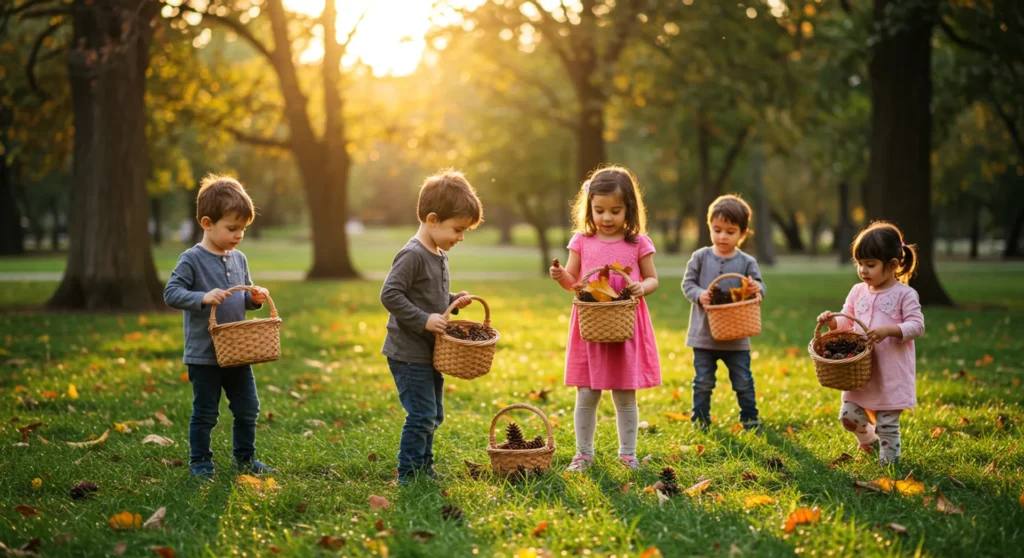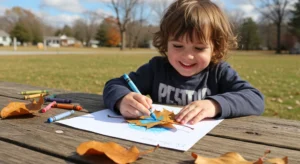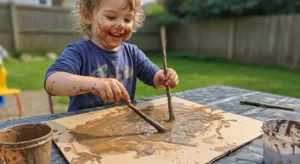There’s nothing quite like the fresh air, warm sunshine, and natural world when it comes to engaging preschoolers in fun and meaningful play. Outdoor sensory play for preschoolers is one of the most powerful ways to nurture creativity, strengthen cognitive skills, and support emotional well-being. Even better, nature is free, abundant, and endlessly inspiring. Unlike screen-based activities, time spent outside gives children real, hands-on experiences that engage all five senses.
In this article, we’ll explore the benefits of outdoor sensory play, share simple activities you can do with your child, and provide tips to make every adventure a learning experience. Whether you’re in a backyard, local park, or neighborhood trail, the outdoors can be transformed into a preschool classroom full of discovery. Even a short walk can spark curiosity, conversations, and lessons that stick with your child for life.
Why Outdoor Sensory Play Matters
Preschoolers learn by engaging their senses. Touching leaves, hearing birds, smelling flowers, and watching the wind ripple through grass all stimulate different areas of the brain. Outdoor sensory play invites children to slow down, focus on their surroundings, and make connections between what they see, feel, and hear. This process builds strong foundations for learning across multiple areas:
- Fine and Gross Motor Skills: Digging in dirt, stacking rocks, or climbing over logs helps strengthen muscles, coordination, and balance. Small hand movements like sorting leaves improve fine motor control, which is essential for writing and drawing later on.
- Language Development: When children describe textures (“bumpy,” “smooth,” “crunchy”) or colors, they enrich their vocabulary. Parents can encourage this by asking questions like, “What does this feel like?” or “Can you find something rough?”
- Social Skills: Outdoor activities encourage teamwork and cooperation. Whether sharing a bucket of pinecones or building a nature fort, children learn negotiation, patience, and problem-solving.
- Emotional Regulation: Nature has a calming effect. Listening to the rustling of trees or feeling grass under their toes helps children manage stress and big emotions, much like mindfulness practices for adults.
As highlighted in The Importance of Play in Preschool Development, play is the foundation of early learning. When combined with the outdoors, it becomes even more enriching and restorative for children — and their parents, too.
5 Outdoor Nature Sensory Play Activities
1. Nature Treasure Hunt
Create a simple scavenger list: a smooth rock, a yellow leaf, something soft, something bumpy. Preschoolers love the adventure of searching and categorizing their finds. You can adapt the activity to different seasons—look for pinecones in winter, blossoms in spring, or acorns in fall. Treasure hunts not only strengthen observation skills but also introduce early science concepts like classification and categorization.
Tip: Take photos of your child’s “finds” and create a seasonal collage to document their discoveries throughout the year.
2. Mud Paint Creations
Mix a little dirt with water and let your child use sticks, feathers, or old brushes to “paint” on cardboard, stones, or sidewalks. Messy play like this encourages creativity while supporting fine motor development. Mud painting also teaches resourcefulness — children learn that they can make art with simple materials found outside. For more inspiration, check out Creative Preschool Crafts to Boost Your Child’s Imagination.
Variation: Add food coloring or crushed chalk to mud for colorful paint experiments. This adds a STEAM (Science + Art) twist to the activity.
3. Leaf Rubbing Art
Place a leaf under a sheet of paper and let your child rub crayons across the surface to reveal its unique texture. This combines art with science as children explore shapes and patterns found in nature. It also introduces lessons about plant life cycles and the importance of trees in our environment.
Tip: Create a “leaf book” by collecting rubbings and labeling them by color, shape, or type of tree. This can be a fun long-term project that grows with your child’s curiosity.
4. Sound Walk
Take a slow walk and focus only on listening. Ask your child what they hear: birds chirping, wind rustling, or dogs barking. This simple mindfulness exercise enhances focus and calms restless energy, much like the calm routines discussed in How to Create a Positive Learning Environment for Your Child.
To extend this activity, record the sounds with your phone and play them back at home. Let your child guess what they were hearing. This builds memory and strengthens auditory processing.
5. Nature Sensory Tray
Gather small natural items — pinecones, shells, twigs, flowers — and arrange them in a tray or shallow bin. Let your preschooler explore textures, sort items by size or color, and create imaginative play scenarios. This is especially useful on rainy days when outdoor time is limited — your child can still explore nature indoors.
Variation: Add a magnifying glass for close inspection, or pair the tray with storytime. For example, while reading about forests, let your child feel pinecones and twigs to connect the story with real-world objects.
Tips for Moms and Dads
Outdoor play doesn’t need to be complicated. With a little preparation and an open mind, you can make every outing meaningful. Here are a few extra ideas to keep in mind:
- Pack a Nature Kit: A magnifying glass, small bags, crayons, and a notebook make exploration more exciting. Encourage your child to sketch what they see or glue items into a scrapbook.
- Encourage Curiosity: Instead of giving answers right away, ask open-ended questions like “What do you notice?” or “How does it feel?” This supports critical thinking and helps children learn to express themselves clearly.
- Mix Routine with Spontaneity: Plan a weekly park visit but also embrace unexpected discoveries, like stopping to watch ants carry food or following a butterfly across the yard. These spontaneous moments are often the most memorable.
- Balance Free Play and Guidance: Let children explore independently but gently guide them toward new skills or vocabulary. For example, if they’re building with sticks, you might introduce words like “stack,” “lean,” or “balance.”
- Dress for Mess: Outdoor sensory play often means dirt, mud, and water. Comfortable clothing that can get dirty encourages freedom and creativity without stress for parents.
Learning Benefits of Outdoor Sensory Play
Outdoor sensory play isn’t just fun — it lays the groundwork for academic and social success. Activities like sorting rocks, counting petals, or comparing textures are early math and science lessons. They also boost problem-solving, resilience, and self-confidence. Children learn persistence when a stick fort collapses and pride when they finally balance it correctly.
Parents often notice that children sleep better and are more relaxed after outdoor play. Exposure to natural light helps regulate circadian rhythms, while physical activity supports healthy growth. These are benefits that go beyond playtime, shaping overall well-being.
Research supports the value of outdoor learning. According to the National Association for the Education of Young Children (NAEYC), nature-based play enhances creativity and supports healthy child development. The simple act of digging in the dirt or listening to bird songs can lay the foundation for lifelong curiosity and a love of learning.
How to Get Started
You don’t need special equipment or a large backyard to make outdoor sensory play a regular part of your child’s routine. Start small and build habits over time:
- Dedicate 15–20 minutes daily for outdoor play, even if it’s just in your driveway or a small patch of grass.
- Use what’s available — local parks, backyards, or even a balcony garden can become sensory-rich spaces.
- Combine activities with learning themes. For example, count flower petals during math time, or compare leaf colors when discussing art.
- Document discoveries with photos or a “nature journal.” Encourage your child to draw what they see, or print photos and add captions together.
- Adapt for weather. On hot days, water play with sponges and buckets can be refreshing; in colder months, exploring snow or collecting pinecones can be just as engaging.
For more ideas to create enriching play environments at home, see How to Create a Stimulating Learning Environment for Your Preschooler.
Final Thoughts
Outdoor sensory play for preschoolers transforms simple walks or backyard time into powerful opportunities for growth and bonding. From mud painting to sound walks, these activities strengthen skills, nurture creativity, and create lasting memories. Most importantly, they remind us to slow down, breathe deeply, and let nature be our child’s best teacher.
As parents, we often get caught up in structured lessons or scheduled activities. But sometimes, the most profound learning happens when children chase a butterfly, dig in the dirt, or feel the texture of a pinecone. These experiences teach patience, observation, and joy — all qualities that help children thrive in preschool and beyond.
Next time you step outside with your little one, remember: every leaf, rock, and breeze holds a lesson waiting to be discovered. All you need is time, curiosity, and the willingness to explore together.




